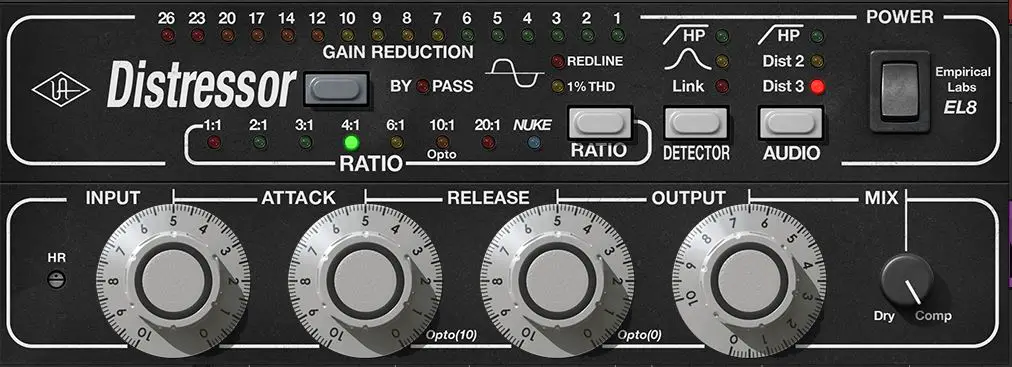Table of Contents
Image credit Tyler Allix
Mha Iri is kicking off her most ambitious project yet—a four-part EP series exploring the elements of Earth, Air, Fire, and Water. The first installment, Leader of the Pack, landed on December 6th 2024, and channels the raw, grounded energy of Earth. Known for her relentless touring schedule and unforgettable sets at Awakenings, Tomorrowland, and ADE’s Gashouder, Mha Iri brings that same intensity to this record.
Mha Iri talks a lot about her connection to nature, and you can hear it in the way these tracks evolve—layered, organic, and unapologetically heavy. From the booming kicks to the hypnotic acid lines, a grounded energy ties everything together.
In the interview below, Mha Iri takes us behind the scenes of Leader of the Pack, breaking down her production process and the tools that brought her vision to life. Whether it’s the Acid V plugin shaping those sharp, resonant leads or the careful use of saturation to add warmth and texture, she walks through the small details that make these tracks hit so hard.
Mha Iri ‘Leader of the Pack’ EP is out December 6th on [PIAS] Électronique. Get it here!

Acid – V

I used Acid V to create the main arp of the track. This plugin beautifully emulates classic acid sounds, particularly the ones made legendary by the Roland TB-303. It’s known for producing sharp, resonant bass lines and its signature filter resonance, which is essential for achieving that iconic acid sound that defined an era of electronic music. With its extensive set of modulation options, Acid V can produce everything from subtle, groovy basslines to aggressive, squelchy leads.
For this track, I started with the preset “Once Demon T”. Although the preset provided a great foundation, I decided to modify it heavily to fit the unique vibe of “Leader of the Pack.” First, I removed the internal sequence of the synth, which allowed me to have more control over the melody and rhythmic flow. I then created several layers of automation for the cutoff and resonance parameters, making the arp evolve dynamically and keeping it engaging throughout the track. By carefully syncing these automations to the tempo, I was able to accentuate key rhythmic elements and add a sense of movement that keeps the listener hooked.
I also experimented with modulating the delay and reverb effects within Acid V. By automating the delay feedback and reverb wet/dry levels, I added a sense of space and depth that evolves over time, making certain sections of the track feel expansive and others more focused. For extra impact, I layered multiple instances of the same arp, slightly detuning one of them and applying different reverb settings to create a lush, textured soundscape. To make sure the arp cut through the mix without overpowering other elements, I processed it using a UAD Trident EQ to boost the high mids slightly, adding clarity, and a UAD Teletronix compressor to tame any peaks and glue the sound together.
If you’re aiming for an old-school acid vibe, Acid V is incredibly effective. One of the best features is how the presets give you a sound that’s already quite close to the target. This makes it easy to focus on the creative and arrangement aspects, rather than spending too much time tweaking the synth settings. For techno producers, automating parameters like resonance and cutoff is a must, as it brings energy and life to the track. Don’t be afraid to experiment with extreme settings—sometimes, that’s where the magic happens.
UAD Distressor

The UAD Distressor is a software emulation of the legendary Empirical Labs Distressor hardware compressor, renowned for its versatility and ability to shape sound dynamically. It’s capable of everything from subtle, smooth compression to aggressive, character-filled distortion. The Distressor is particularly famous for its ability to add warmth and harmonic richness, making instruments and vocals feel alive and present in the mix.
In “Leader of the Pack,” I used the Distressor to give the vocals a warmer, fuller tone and enhance their presence. Using the Dist 3 setting—which provides tape-like saturation—I was able to add rich harmonics that made the vocals stand out while still blending beautifully with the track. The compressor’s flexible attack and release settings allowed me to shape the dynamics precisely, adding punch and consistency without sacrificing the natural feel of the performance. I experimented with a medium-fast attack and a quick release to retain the energy and clarity of the vocals.
This plugin is a fantastic tool if you’re looking to add analog-style warmth to your tracks without losing clarity. It’s particularly useful for vocals, guitars, or even synth pads, as it can both tame peaks and add a lush, musical quality. One tip: don’t be afraid to explore the different distortion modes. They can add unique textures that elevate your mix in unexpected ways.
FabFilter Saturn

The FabFilter Saturn is a powerful multiband saturation and distortion plugin that offers a wide spectrum of sound-shaping options, from gentle, tube-like warmth to full-on aggressive distortion. With its intuitive interface and advanced modulation features, it’s incredibly flexible for sound design and mixing, allowing producers to add character and energy to any element of a track.
For this project, I used Saturn to add warmth and subtle harmonics to various elements, ensuring they had a rich, polished sound. One of the standout features of Saturn is the ability to split the frequency spectrum into multiple bands and apply different types of saturation to each. For example, I used a soft tube saturation on certain frequency bands to bring out warmth, while experimenting with tape saturation on higher frequencies to add brightness and detail. Additionally, Saturn’s modulation options allowed me to introduce movement and evolving textures, keeping the sound dynamic and engaging.
This plugin is essential for producers working in electronic music. It’s perfect for enhancing synths, adding grit to percussive elements, or even warming up ambient pads. One of my favorite tricks is to use subtle modulation to change the saturation amount over time, giving the sound a more organic feel. Saturn’s flexibility makes it a must-have tool for bringing life and character into your productions.
Production Quick Tips
- In techno, the kick and bass are crucial. Low frequencies are often the trickiest to handle, but they’re also the foundation of electronic music, so they need special care. Make sure to give them special attention and use tools like EQ and sidechain compression to carve out space.
- The core theme or idea is key. Before diving into the full production, create a rough draft where you can focus solely on creativity. Make loops, experiment, and sketch out a basic structure whilst focusing on the overall theme and vibe of the track. Then build out from there.
- Mixing is crucial, but I always aim to have the track sound good even before heavy processing. Getting the balance right from the start makes the mixing stage more about enhancing rather than fixing.
- Everyone’s production approach is unique, and that’s okay! Whether you use only digital plugins, are obsessed with modular synths, use samples or even incorporate AI. The most important thing is the final result. If it’s creative, original and sounds good then you’ve done a great job. If it gives listeners goosebumps then you’ve done an amazing job!
The post How It Was Made: Mha Iri – Leader of the Pack ([PIAS] Électronique + Techno) appeared first on Magnetic Magazine.



